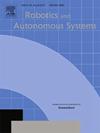From data extraction to data-driven dynamic modeling for cobots: A method using multi-objective optimization
IF 4.3
2区 计算机科学
Q1 AUTOMATION & CONTROL SYSTEMS
引用次数: 0
Abstract
Controlling collaborative robots (cobots) is a new and challenging paradigm within the field of robot motion control and safe human–robot interaction (HRI). The safety measures needed for a reliable interaction between the robot and its environment hinder the use of classical position control methods, pushing researchers to explore alternative motor control techniques, with a strong focus on those rooted in machine learning (ML). While reinforcement learning has emerged as the predominant approach for creating intelligent controllers for cobots, supervised learning represents a promising alternative in developing data-driven model-based ML controllers in a faster and safer way. In this work, we study several aspects of the methodology needed to create a dataset for learning the dynamics of a robot. To this aim, we fine-tune several PD controllers across different benchmark trajectories using multi-objective evolutionary algorithms (MOEAs) that take into account controller accuracy, and compliance in terms of low torques in the framework of safe HRI. We delve into various aspects of the data extraction methodology including the selection and calibration of the MOEAs. We also demonstrate the need to tune controllers individually for each trajectory and how the speed of a trajectory influences both the tuning process and the resulting dynamics of the robot. Finally, we create a novel dataset and validate its use by feeding all the extracted dynamic data into an inverse dynamic robot model and integrating it into a feedforward control loop. Our approach significantly outperforms individual standard PD controllers previously tuned, thus illustrating the effectiveness of the proposed methodology.
从数据提取到数据驱动的协作机器人动态建模:一种多目标优化方法
控制协作机器人(cobots)是机器人运动控制和人机安全交互(HRI)领域的一个新的和具有挑战性的范式。机器人与其环境之间可靠交互所需的安全措施阻碍了经典位置控制方法的使用,这促使研究人员探索替代电机控制技术,重点关注那些植根于机器学习(ML)的技术。虽然强化学习已经成为为协作机器人创建智能控制器的主要方法,但监督学习代表了以更快、更安全的方式开发基于数据驱动模型的ML控制器的一个有前途的替代方案。在这项工作中,我们研究了创建用于学习机器人动力学的数据集所需的方法的几个方面。为此,我们使用多目标进化算法(moea)对不同基准轨迹上的几个PD控制器进行微调,该算法考虑了控制器的精度,以及在安全HRI框架下的低扭矩遵从性。我们深入研究了数据提取方法的各个方面,包括moea的选择和校准。我们还演示了为每个轨迹单独调整控制器的必要性,以及轨迹的速度如何影响调整过程和机器人的最终动力学。最后,我们创建了一个新的数据集,并通过将提取的所有动态数据馈送到逆动态机器人模型中并将其集成到前馈控制回路中来验证其使用。我们的方法显著优于先前调整的单个标准PD控制器,从而说明了所提出方法的有效性。
本文章由计算机程序翻译,如有差异,请以英文原文为准。
求助全文
约1分钟内获得全文
求助全文
来源期刊

Robotics and Autonomous Systems
工程技术-机器人学
CiteScore
9.00
自引率
7.00%
发文量
164
审稿时长
4.5 months
期刊介绍:
Robotics and Autonomous Systems will carry articles describing fundamental developments in the field of robotics, with special emphasis on autonomous systems. An important goal of this journal is to extend the state of the art in both symbolic and sensory based robot control and learning in the context of autonomous systems.
Robotics and Autonomous Systems will carry articles on the theoretical, computational and experimental aspects of autonomous systems, or modules of such systems.
 求助内容:
求助内容: 应助结果提醒方式:
应助结果提醒方式:


